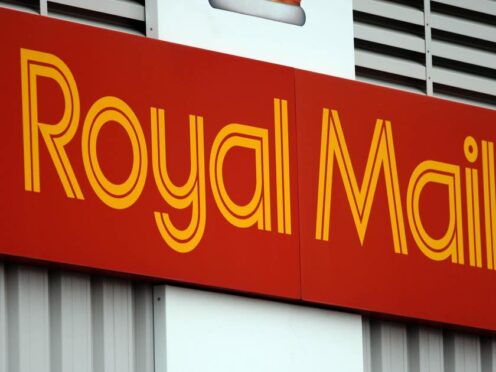Regulators have launched an investigation into Royal Mail after it delivered less than three quarters of first class post on time in the last year.
In its yearly financial results on Friday, Royal Mail’s parent company, International Distribution Services (IDS) said only 74.5% of first class mail was delivered within one working day.
Under communications watchdog Ofcom’s rules, 93% of first class mail must be delivered within the timeframe, excluding Christmas.
Royal Mail also missed its 98.5% target of second class post being delivered in three days, delivering only 92.4% on time.
Ofcom said: “If it does not provide a satisfactory explanation and we determine that Royal Mail has failed to comply with its obligations, we will consider whether to impose a financial penalty.”
Last year, Ofcom fined the company £5.6m for failing to meet its delivery targets in 2022/23.
The figures were part of a financial results statement delivered more than 24 hours late, after markets closed on Friday. It was initially scheduled for 7am on Thursday May 23.
The statement showed that Royal Mail’s losses narrowed to £348 million, up from £419 million for the year ending March 31.
Martin Seidenberg, chief executive of IDS, said: “We have improved quality, won back customers lost during industrial action, controlled costs and delivered Christmas for our customers.
“Positive momentum is building, although there is hard work in front of us to get back to profitability.”
The results also come as IDS waits for a potential buyout offer from Czech billionaire Daniel Kretinsky.
IDS gave no update on the potential deal, only that no firm offer had yet come in.
It reiterated that it is “minded” to accept a proposed bid worth about £3.5 billion put forward on May 15.
Business Secretary Kemi Badenoch said earlier this month that Royal Mail’s universal service obligation will need to be protected in any sale of the firm.
IDS has previously said Mr Kretinsky agreed to offer a set of “contractual undertakings” to protect key public interest factors.
It also said the proposal recognised Royal Mail’s status as a major part of national infrastructure.
This would include commitments to Royal Mail’s plans to keep six-day-a-week first class letter deliveries under the universal service, protect workers’ rights and keep the Royal Mail brand, as well as its UK headquarters and tax residence.
Mr Kretinsky has until 5pm on May 29 to make a firm offer.
